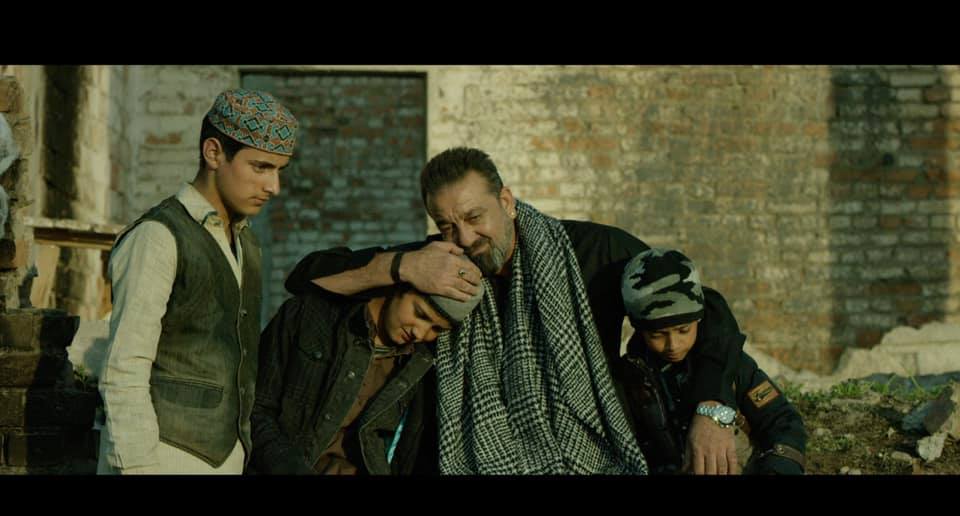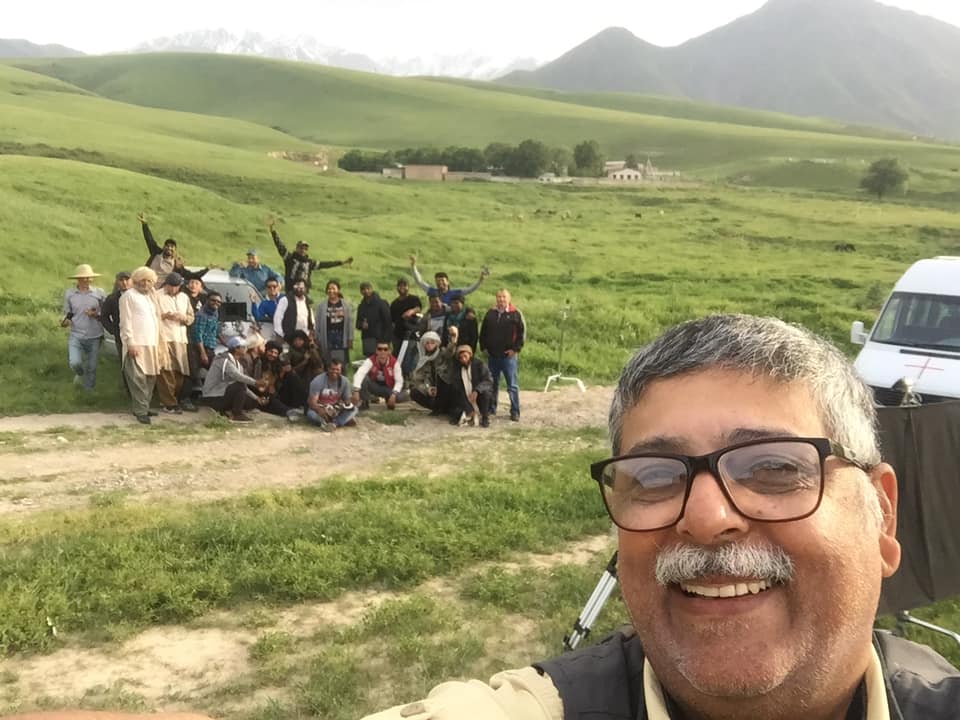Torbaaz, Sanjay Dutt’s first film to release after his recovery from cancer, showcases a cricket match in vast dusty grounds with on-point cricketing shots and follow-throughs.
The film was directed by Girish Malik and released globally in December 2020 on Netflix. The principal photography of the movie began in December 2017 with much of the filming done in Bishkek, Kyrgyzstan. In fact, Torbaaz is the first Indian film to be shot there. The man responsible for the elegant and breathtaking shots in the movie is Hiroo Keswani.
Connected to India speaks to the talented cinematographer and wonders why his name has not been in the credits before.
“Thank you for the compliment. I have been around… silently doing my assignments, having my own fan following amongst faithful few directors and now wanting to widen my horizon”, responds Hiroo.
He also mentions that luck plays a role when some of the best work don’t see the light of day or very few people get to see it due to various reasons.
FTII – The beginning
Hiroo's journey in the world of cinema began in the 3 years between 1984-1987 during his stint at the Film and Television Institute of India (FTII) in Pune, which provided him with film making knowledge with a specialisation in cinematography.
“Anukram was my first fiction project for my batchmate director Anik Ghosh”, Hiroo tells Connected to India.
The pursuit of excellence in every project continued as he honed his talent as a cinematographer, taking up every challenging opportunity thrown at him by various talented directors as he gave “visuals to their cinematic vision!”
Hiroo has been the main Director of Photography or DoP for Sssshh, Bhram, Oye Mama, The Answer and now Torbaaz. He has been second unit DoP for the Munnabhai series, 3 Idiots, Tasveer, Mausam, PK and Bang Bang, to name a few.
In the 25 years since he started, he has added many achievements and laurels to his name, including venturing into aerial cinematography – shooting from helicopters – for corporates, car commercials, golf courses and marathons.
“However work on that has reduced to a trickle as technology has changed and drones came in and helicopter shooting is considered a long drawn process especially in India due to excess of rules and regulations”, he says.
Amongst Hiroo's many achievements are the two international cinematography awards for the feature film The Answer.
“The Answer was my fourth feature and my third outing with Pavan Kaul with whom I share a special bond as a formidable cinematographer – director team”, says Hiroo.
He has also been part of three workshops on the restoration and preservation of films with the Film Heritage Foundation helmed by Shivendra Singh Dungarpur in guidance with Martin Scorsese and FIAF.
Films he has restored digitally include – Munnabhai series for Rajkumar Hirani, Chashme-Buddoor f0r Jayshree Makhija( PLA films), Hun Hunshi Hunshilal for Sanjeev Shah, Parinda, 1942 a Love Story and many more for Vidhu Vinod Chopra.
"I am currently working on a very special film project LutaLoot helmed by FTII alumni Milind Ranade. These restoration jobs help me stay connected with the earlier celluloid work and today’s digital technology", says Hiroo.
Torbaaz – The challenges
The cinematographical challenges were there right upfront upon reading the script of Torbaaz, with the main one being the location, explains Hiroo.
“The topography sketched in the story is rugged and harsh. We could not go to Afghanistan to shoot for obvious reasons, so the search for a similar topography became an obsession with Girish, his assistants, executive producers and myself”, he says.
After scouting through upper northern regions of India, Middle East terrain and some other options, the beautiful country of Kyrgyzstan with its amazing landscape became the team's chosen terrain to shoot this large scale project.
Another challenge was working with the children (who are marvelous in the film), says Hiroo, by avoiding retakes, using multiple cameras to cover their emotions as well as their cricketing actions.
“Though getting there and making it work was a big-time production challenge, we did it with a lot of sweat and hard work”, he says.
Choosing the right equipment, especially choosing the kind of camera to portray the story effectively on screen, was also a challenge, says Hiroo giving the intriguing example of two characters in Torbaaz – Nasser and Qazar.
“Nasser’s character is a closed one… so initially he is isolated from surroundings in shallow depth. But as he starts loving his surroundings and situations, his visuals/framings go wide. Whereas Qazar as a leader of insurgents has a world view and addresses the world in open landscapes, but when planning he is in confines and hidden in shadows”, elaborates Hiroo.
Another challenge was the maintenance of the equipment as looking for replacements in a foreign land can be costly, “especially in the not so film-production-friendly capital city of Bishkek 2 years back”, says Hiroo.
”We had so much of our own mixed-format equipment plus rental equipment of the main camera, charging of various batteries in harsh winter conditions used to be a challenge. My assistants and associates, Pramod, Shashank Ranjan along with the camera team from Prime Focus, were always on top of things”, adds Hiroo.
Teamwork – The filming crew
Choosing a no-nonsense team, comprising associates who can double up for any eventuality if anything went wrong, anyone fell sick or got hurt is key, says Hiroo.
“It could even be me. We were on an outdoor location with a huge crew and production setup. Any replacement would take time, money and paperwork to get a person to travel. So the onus was to take such a team, that, if need be, could jump into my seat too, if required, say due to ill health”, he adds.
Cross-checking with assistant directors on the availability times – on set or on location – of different actor talents can come in handy to save valuable time and money, says Hiroo.
“What I have encountered and faced in the US, in Romania and in Kyrgyzstan too was that one has to lead by example. Only then you can make the local crew trust you and make them work effectively for you and the production", he adds.
Responsibilities – The Director of Photography
“The responsibilities of a cinematographer or the DoP as one is mentioned as nowadays are plenty”, says Hiroo.
Despite having multiple assistants and associates, the cinematographer along with the director are the last man standing till the film is final and ready for release in its deliverable format, he says.
“The cinematographer should know the script by heart, so that in any eventuality of bad weather or any unforeseen production mishap, something to do as an alternative should always jump up in a cinematographer's mind”, says Hiroo.
The British Society of Cinematographers (BSC) brought out a checklist many years ago, which mentions 100-200 points as the responsibilities of a cinematographer.
“With years of working and practice, in the subconscious mind, one keeps ticking the listed points and it becomes second nature to do the check list without physically referring to it,” he says.
Praise for the cinematography or any other aspect of a film is applause for the director too, believes Hiroo.
“I give full credit to our director Girish Malik, to have thought of such a challenging subject and pulled it off with such elan”, he says.
“The visuals are retained because they were thought of by the director and there was definitive work done towards writing such scenes and taking certain shots,” says Hiroo.
“All in all work in Torbaaz was teamwork and I am glad it all fell in place, to an astounding liking and love from our audience world over”, he says.
Lights and Camera – Before the action
“The camera chosen for the film was RED Epic with Ultraprimes and was shot on 4K. The reason for the choice was ease of use and small footprint, if need be. I am equally comfortable with any camera and format like Alexa or Sony or Panasonic but decided to go with RED”, says Hiroo.
Nowadays in its digital avatar, cinematography cannot escape the mix of various other cameras like Drone camera, GoPro’s, DSLRs and the DSLMs used effectively at many places along with the main camera for principal photography, says Hiroo.
“The colorist should be very helpful in dealing with the color correction of such a multi-format shoot,” he says.
Many a times during outdoor shoots and inclement weather conditions and strong wind factors, it was difficult to pull out the grip and light equipment from the truck or at times even the truck could not reach certain locations.
“One had to rely on being innovative, gutsy and shoot commando mode in ‘au natural’ light and put to test the parameters proclaimed profusely by the camera manufacturers”, says Hiroo.
“One always has this notion that if it’s a feature film, one HAS to use lights… not necessary… Light and shade, contrast can be manipulated in many ways,” says Hiroo.
Whenever it was difficult to use lights or huge skimmers, he used to mentally switch to his "documentary mode” and shoot with available light, carefully choosing the background and natural contrast ratios to still make the characters and the frame look great on screen.
“That comes with experience and faith in your own decisions”, explains Hiroo.
The director too needed to be fully supportive as Girish was “of such run and gun mode many a times”, he adds.
Disciplined versus lazy filmmaking
The work discipline imbibed from working on celluloid has stood its test in the digital realm for Hiroo.
“Not just the technical checklist but an integrity, sincerity and your guts to stand tall in all easy & adverse situations… and to know where the On/Off switch buttons are on the ever changing/evolving digital cameras!” Hiroo says with a chuckle.
Zoom lens is an effective tool and if used wisely can be a big boon for the cinematographer. Many techniques have been invented and innovatively used from the time of Hitchcock films in the 50s till date.
“Aah, the ZOOM… you mention this word to a film school cinematographer and their eyes will throw daggers at you. According to the code of cinematographers, the use of a zoom is a big 'No, No’,” Hiroo quips.
“One can mount one on the camera but not use it to continuously zoom in or out. That constitutes a lazy filmmaking technique”, he says only half in jest.
Depending on the circumstances, it can be a creative call by the director and cinematographer, or a call taken by the cinematographer alone, to mount it on the camera and use its effective range of variable focal lengths for different magnifications to save time on lens changes, says Hiroo.
The same was used in Torbaaz , since kids were involved, he shares.
“Along with multiple cameras covering the scene, zoom was mounted on the main principal camera, not to zoom in or out, but to quickly change the magnification or pick up a quaint reaction from the ever bubbly, unpredictable kids, who were ready to surprise you in every different take”, says Hiroo.
Filmmaking and the COVID-19 pandemic
COVID-19 has affected filmmaking all across the globe and Torbaaz was no exception.
During the lockdown and even many months after that, post production on Torbaaz too was held up. “Final locking of the edit, VFX, sound post-production and then the final DI(Digital intermediate)… all of it was challenging”, says Hiroo.
He was saddened to see hardly any footfall with very few attendees for the screenings in the theatre. “How is the math working out for recovery of cost of making, I wonder?”, says Hiroo.
“With apprehensions on movement due to the risk of Corona spreading and seating capacity curtailed in theatres, revenue recovery would be uphill”, says Hiroo.
He remembers driving down from Pune, from a job at FTII, directly to a screening theatre where the final director's edit was screened at a preview theatre. “It was magical to see the grandeur on the big screen”, he recounts.
“In a COVID stricken time, this chance to release and showcase your film to 190 countries simultaneously was so amazing”, says Hiroo.
Torbaaz resonated with the audience and has been trending and streaming among the 10 best on Netflix, all across the globe.
Hopes for the future
In the near future Hiroo looks forward to reading scripts with great visual appeal, good drama and the opportunity to use lighting as a tool to further the story.
“We cinematographers have a wishlist of directors we want to work with”, says Hiroo.
However, it’s the director’s prerogative to choose and select their cast and crew, “So we all are kind of waiting in the wings, waiting to be called”, he adds, hoping he keeps getting to jump onto centre stage from the wings.
With Web series and OTT originals finding the audience, work is aplenty for Hiroo and he hopes it keeps getting appreciated.

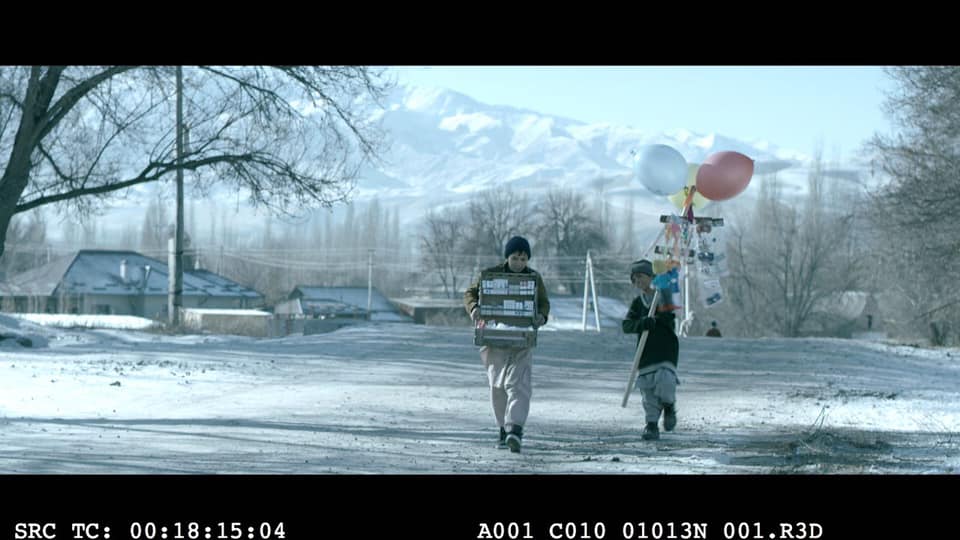

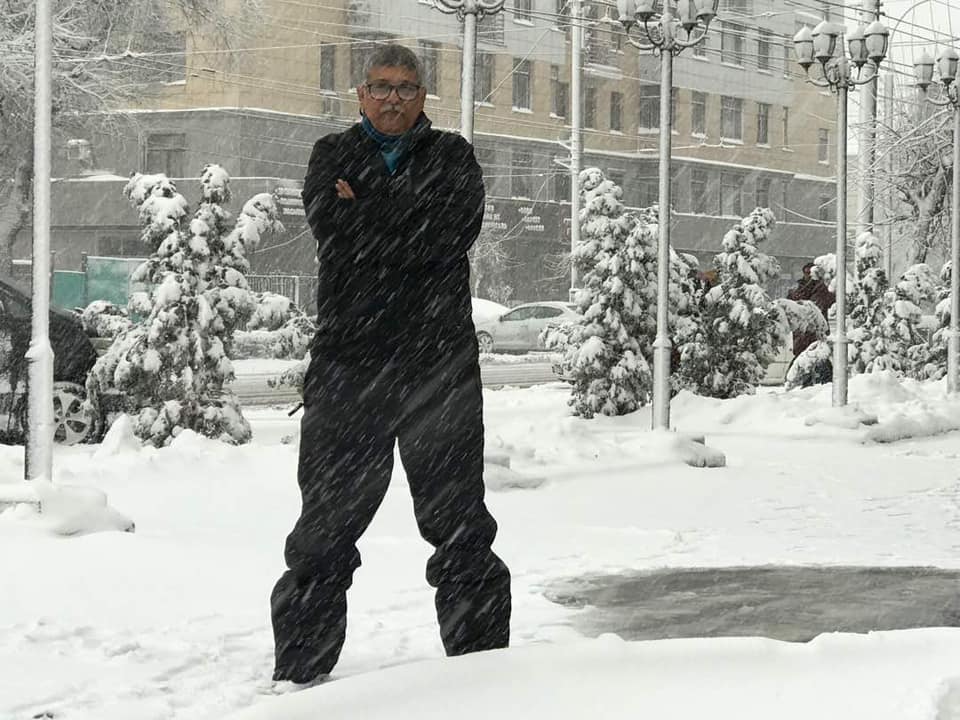
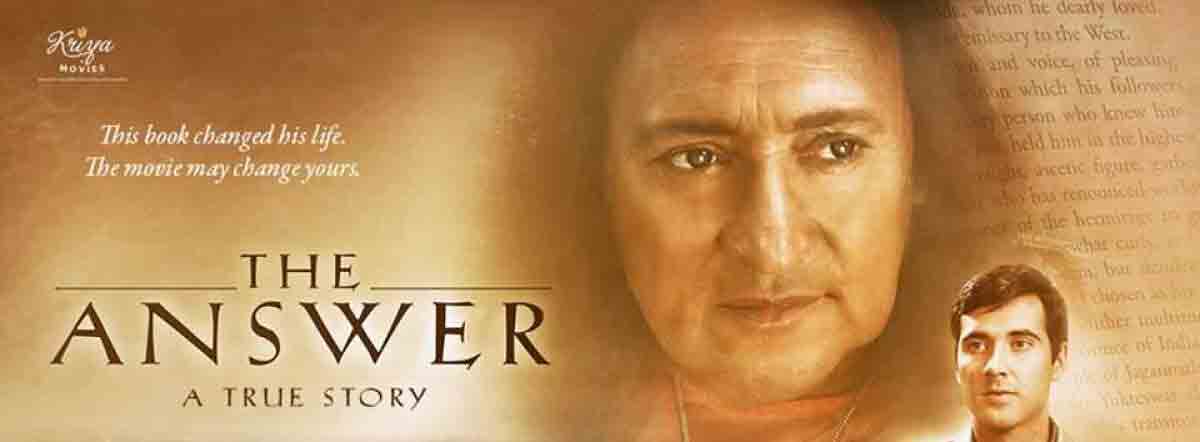
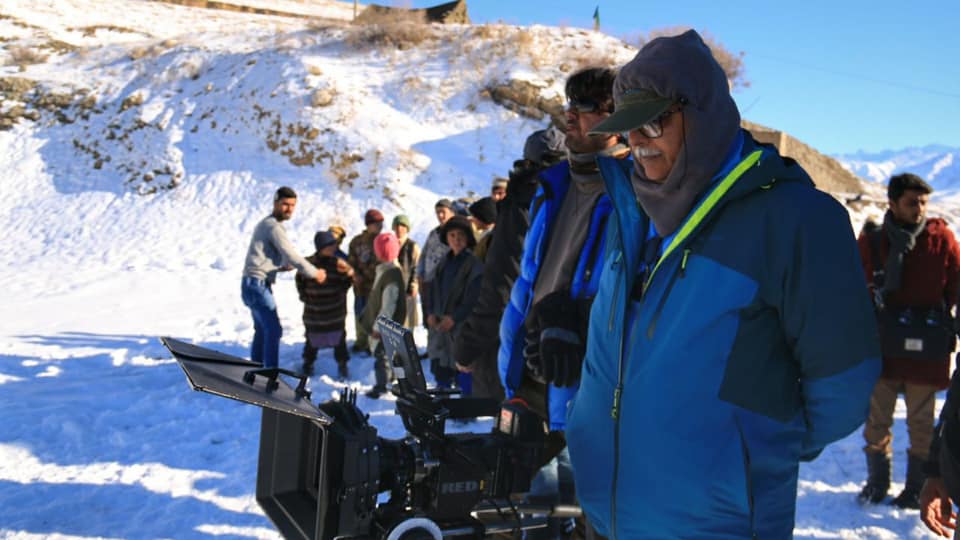

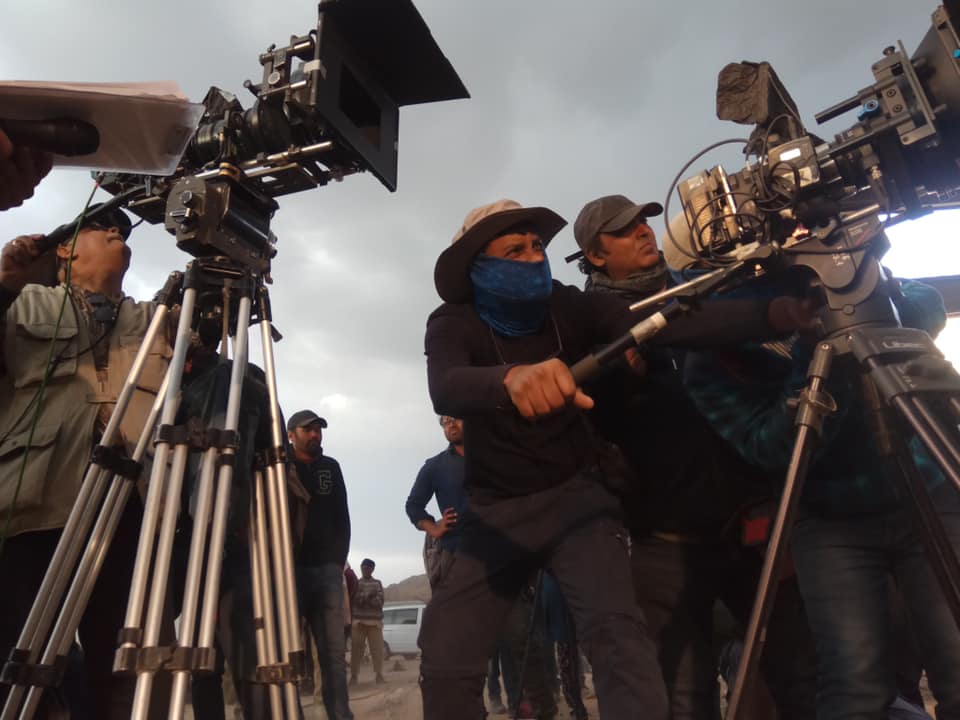
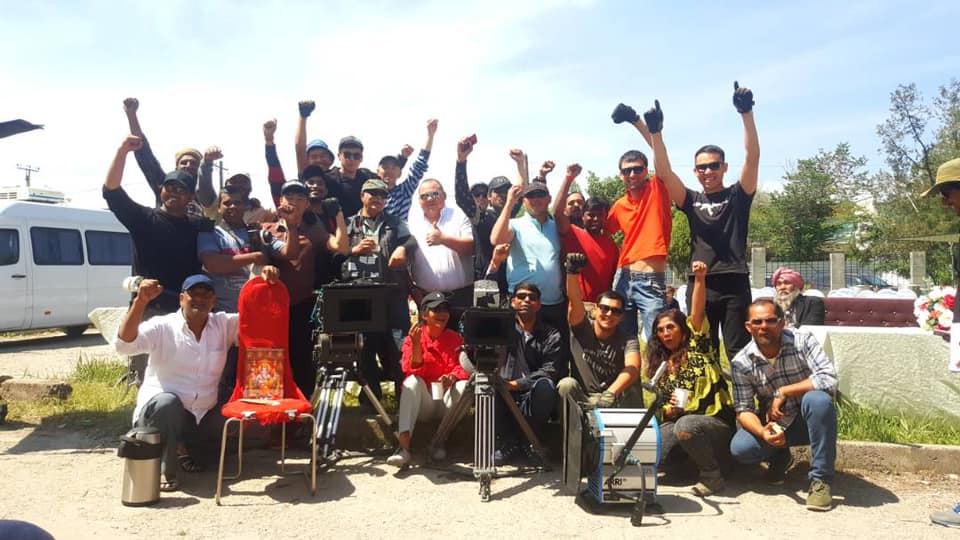
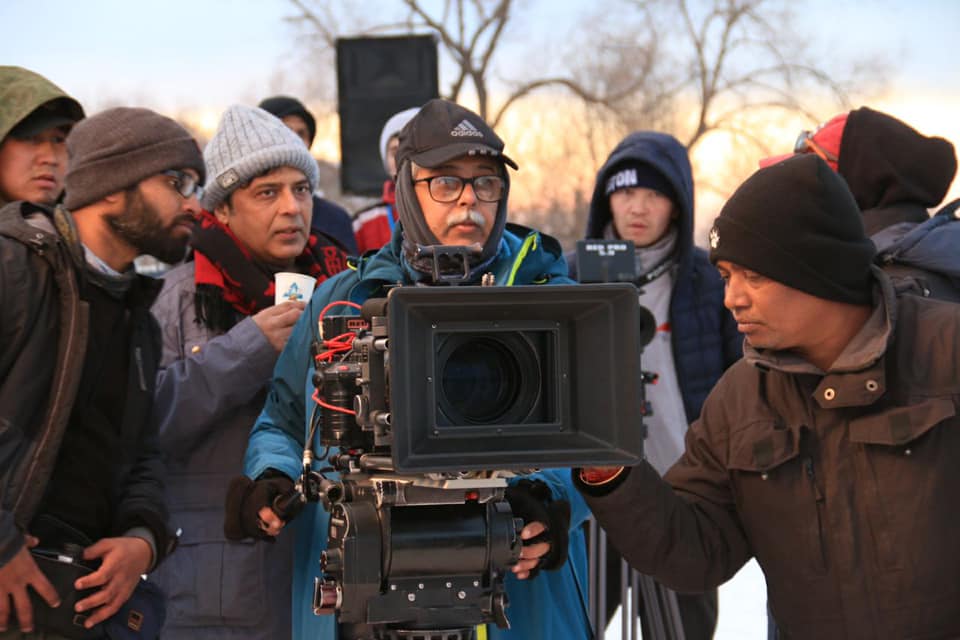
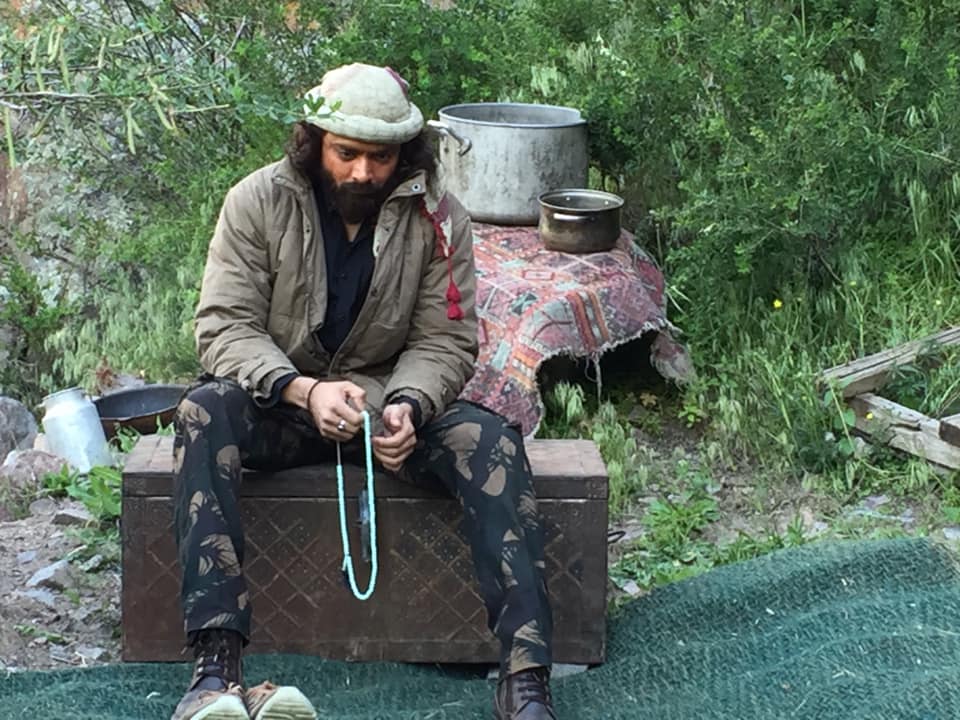
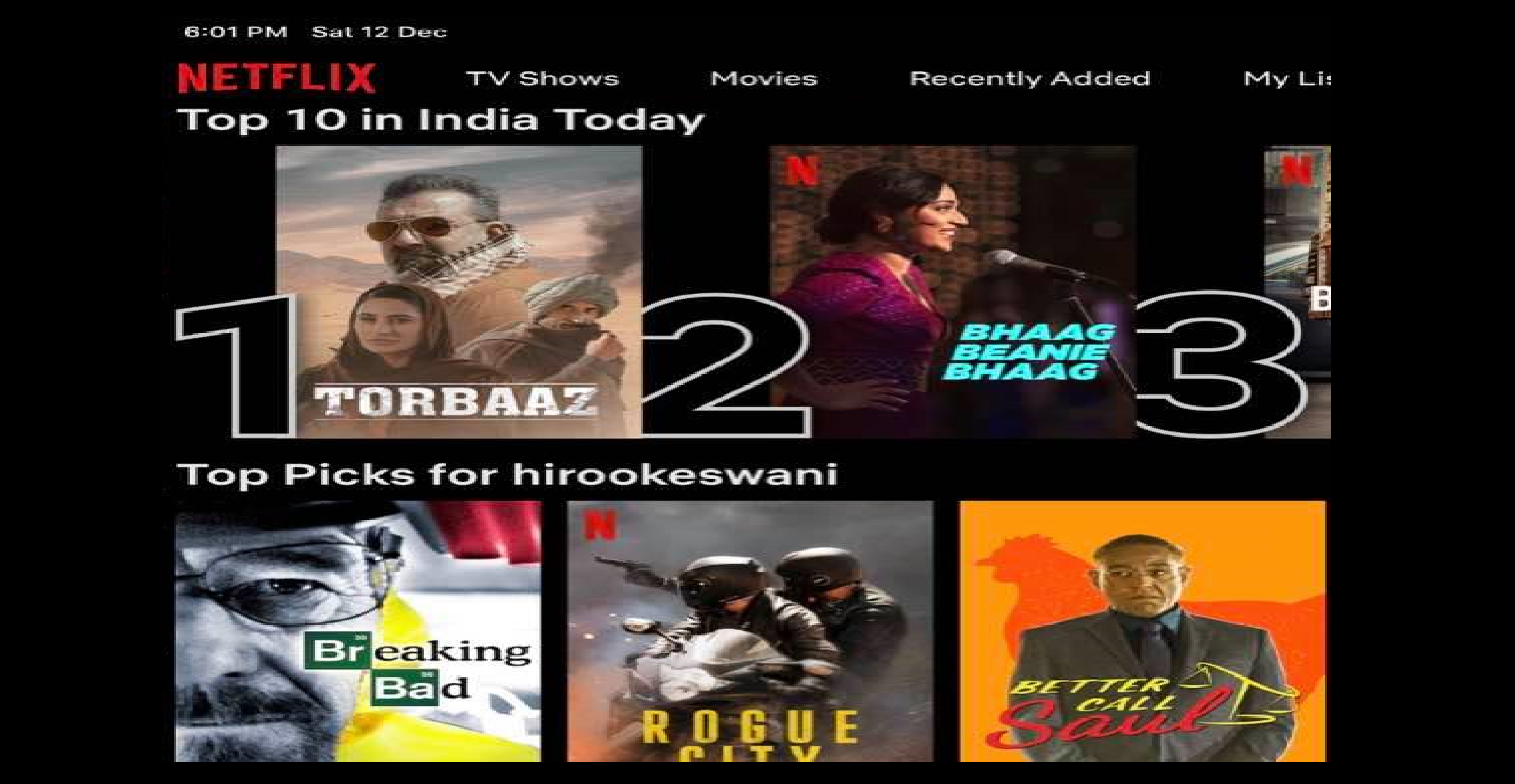


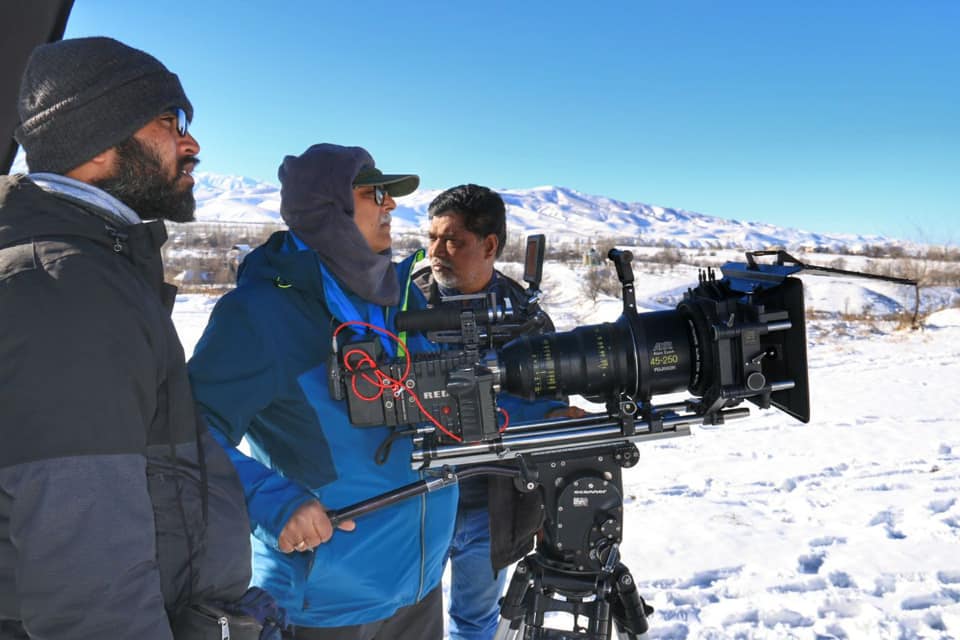
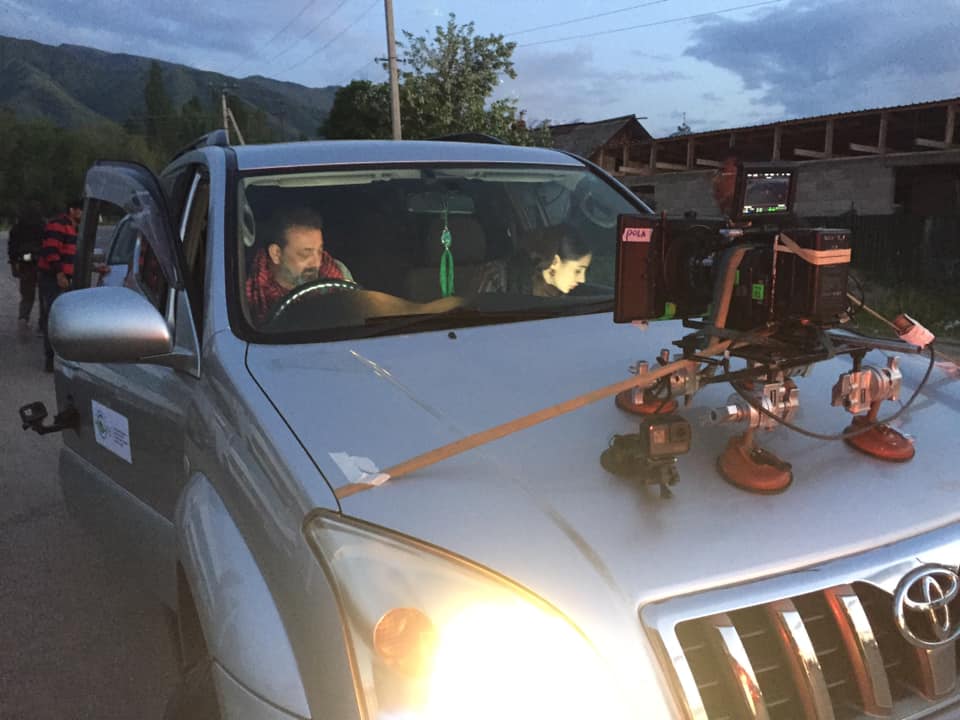
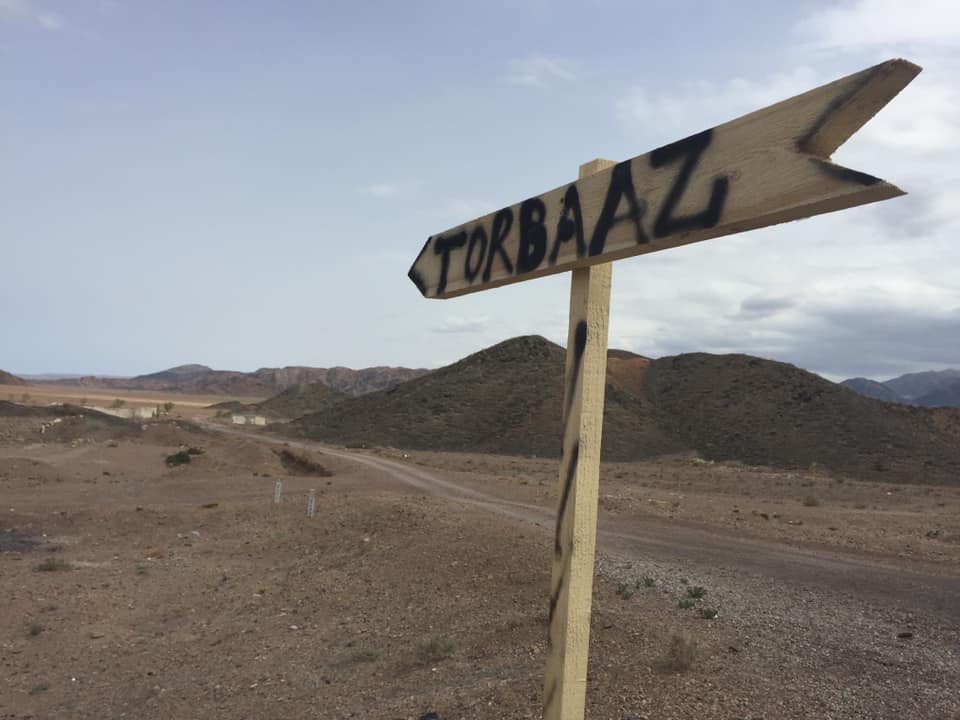 The search for topography similar to that of Afghanistan led the team to Kyrgyztan. Photo Courtesy: Hiroo Keswani/FB
The search for topography similar to that of Afghanistan led the team to Kyrgyztan. Photo Courtesy: Hiroo Keswani/FB 